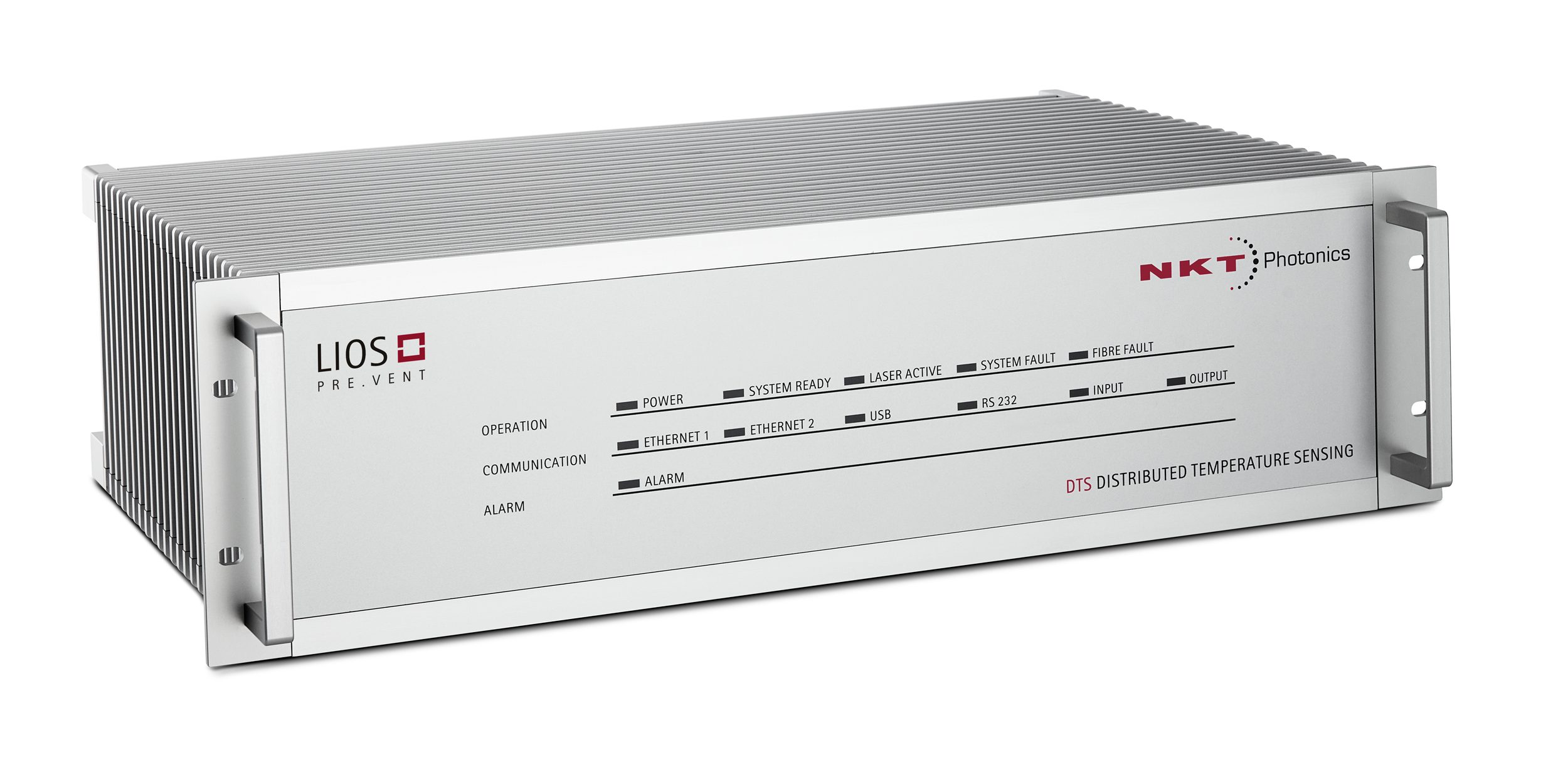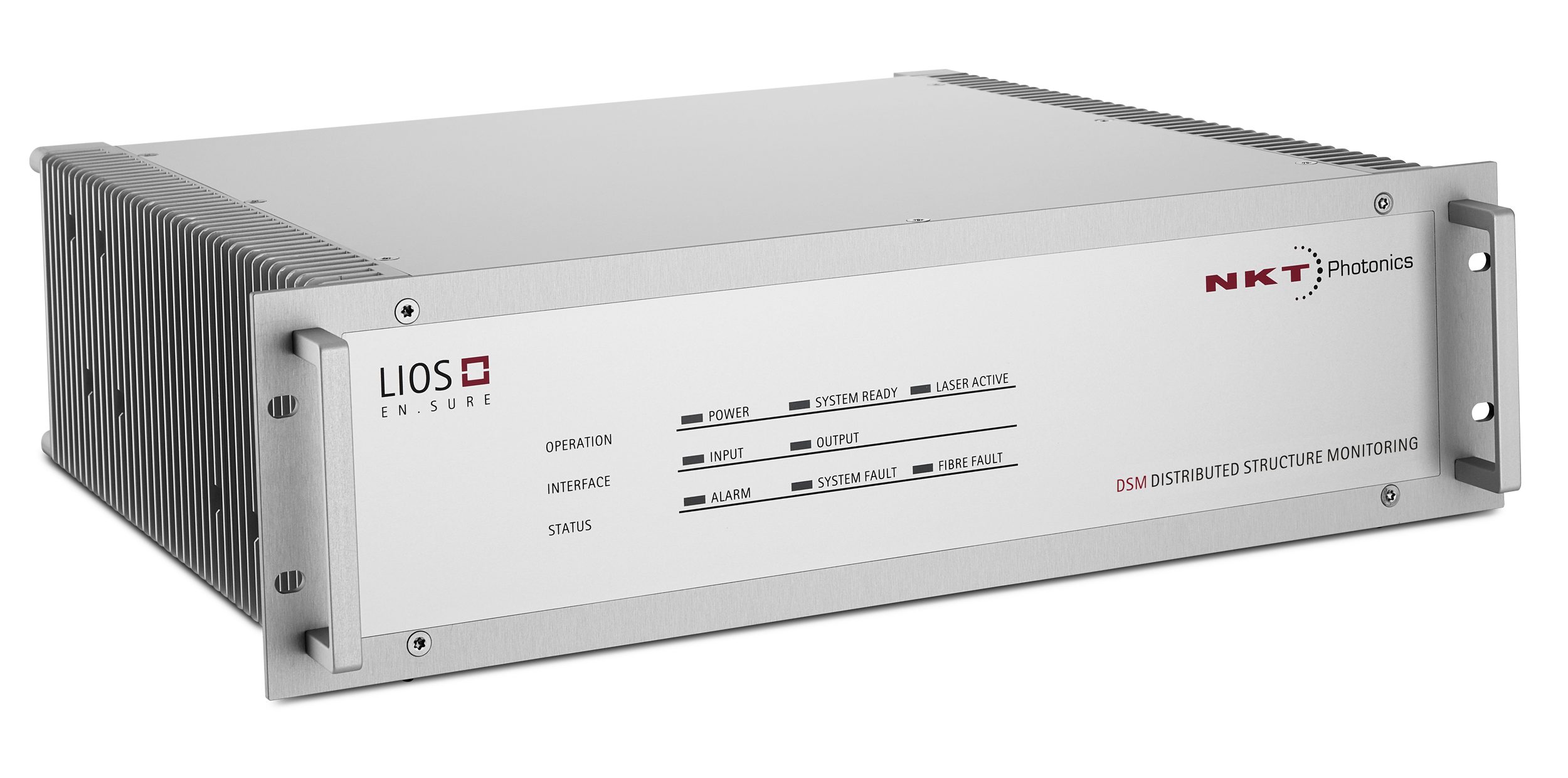Optical ground wire (OPGW) lines are mounted on high-voltage towers. They consist of optical fibers for data communication and conductive wires for connecting high-voltage towers to the ground.
Nature puts a strain on overhead lines and towers
Being out in the open makes the lines vulnerable. Common cable failures include icing, lightning strike, tower collapse, and wind load.
Theoretical models show large strain variations of the OPGW cable before icing, lightning strike or tower collapse occur. We wanted to validate these models.
To understand the strain impact, we made a test set-up and measured the strain along a 500kV OPGW line continuously, using our distributed strain sensor system with a single-mode fiber as a sensor. The field study took place in Guangdong, China, with the set-up depicted in figure 1.
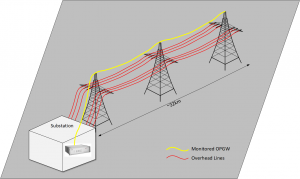
Get precise information about changes in the strain
We placed the distributed strain sensing controller, the Luna Innovation’s LIOS Technology LIOS DSM, in a substation of the 500kV OPGW overhead line.
We connected one of the controller’s optical channels to an optical single-mode fiber in the OPGW which allowed us to measure the strain over a length of 32 km.
The measurement time was about 15 minutes with a minimal strain resolution (repeatability) of about 2µe. 1µe corresponds to a strain or compression of 0.0001% so the employed controller can detect strain changes as low as 0.0002%.
Figure 2 shows the differential strain between two consecutive measurements over the whole length of the OPGW (excluding 250 m of feed cable).
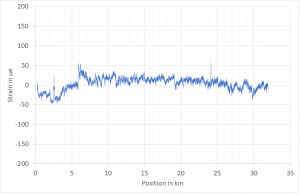
Prevent damage of overhead lines and towers with strain monitoring
Analyzing the strain profile over the 32 km shows that the overall situation is very stable. The strain change between the two measurements is below ±50µe.
A few local events were detected by the DSM system, which indicates an impact on the OPGW. Those events occurred within 15 minutes of measuring time and are most likely due to the weather (wind), e.g. at the connection of the OPGW and the towers. Figure 3 shows the strain change and position.
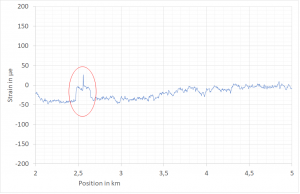 |
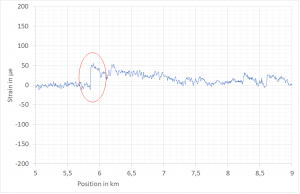 |
Figure 3 – Single strain event on the OPGW
To analyze strain measurements, we need to know the strain change over time. Therefore, we have planned a measurement campaign that spans over a longer period.
This field study shows clearly that strain measurements on overhead OPGW lines can help us understand the spatially distributed strain load and identify local events.
In conclusion, strain monitoring may become a valuable feature for preventing damage of overhead lines and the high-voltage towers. To fully understand the strain distribution on OPGW lines requires continuous monitoring.
Luna Innovation’s LIOS Technology is the market leader in distributed optical strain and temperature sensing with more than 20 years’ experience and thousands of systems in the field worldwide. Passive optical fibers are used as distributed sensors because they are immune to vibration, electromagnetic noise, dust, cryogenic temperatures, and moisture and can be utilized in hazardous environments. Everything made in Germany under ISO 9001 and 14001-certification. https://lios.lunainc.com/en/product-category/pre-vent/
References: Stefan BREUER, NKT Photonics GmbH, Schanzenstraße 39, Building D10, 51519 Cologne, Germany, and Justin Junjie YU, NKT Photonics, 29/F Gopher Center, No. 757 Mengzi Road, Shanghai 200023, P.R. China

